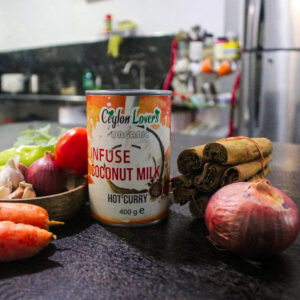Introduction
In recent years, the concept of aromatherapy has gained significant traction as people seek natural and holistic approaches to enhance their well-being. This introductory section aims to provide a foundational understanding of aromatherapy while highlighting the versatility of coconut oil as a carrier oil in aromatherapy practices.
Aromatherapy is a therapeutic practice that utilizes the aromatic properties of essential oils derived from plants to promote physical, emotional, and mental well-being. It operates on the principle that inhaling the fragrances of certain essential oils can stimulate the brain’s limbic system, which is involved in emotions, memory, and arousal, thereby eliciting various physiological and psychological responses.
The popularity of aromatherapy has surged as people increasingly recognize its potential benefits in reducing stress, improving sleep quality, alleviating pain, boosting mood, and enhancing overall relaxation and well-being. As a result, aromatherapy has found its way into various settings, including spas, wellness centers, hospitals, and even home environments.
At the heart of aromatherapy lies the use of essential oils, which are highly concentrated extracts derived from various parts of plants, such as flowers, leaves, stems, and roots. However, essential oils are often too potent to be applied directly to the skin, necessitating dilution with a carrier oil to ensure safe and effective use.
This is where coconut oil comes into play. Coconut oil, derived from the flesh of mature coconuts, is renowned for its nourishing properties and versatility. In aromatherapy, coconut oil serves as an excellent carrier oil due to its neutral aroma, lightweight texture, and ability to easily absorb into the skin, making it an ideal medium for diluting essential oils.
Furthermore, coconut oil boasts its own array of potential health benefits, including moisturizing and soothing properties for the skin, making it a valuable addition to aromatherapy blends. Its natural antibacterial and antifungal properties also contribute to its suitability as a carrier oil, helping to preserve the integrity of essential oil formulations.
In this article, we will delve deeper into the role of coconut oil as a carrier oil in aromatherapy practices, exploring its unique properties and applications. Through understanding the synergy between coconut oil and essential oils, we aim to empower readers to harness the therapeutic potential of aromatherapy for enhancing their overall well-being.
Properties of Coconut Oil
Coconut oil possesses a myriad of unique properties that contribute to its widespread use in various applications, particularly in skincare and aromatherapy. Understanding these properties is essential for harnessing the full potential of coconut oil in different contexts.
Moisturizing and Nourishing: One of the most prominent properties of coconut oil is its exceptional moisturizing ability. Rich in medium-chain fatty acids, coconut oil acts as an emollient, forming a protective barrier on the skin’s surface to lock in moisture and prevent water loss. This makes it highly effective for hydrating dry and parched skin, leaving it soft, smooth, and supple. Additionally, coconut oil contains vitamin E and other antioxidants that nourish the skin, promoting a healthy and radiant complexion.
Antimicrobial: Coconut oil exhibits potent antimicrobial properties, thanks to its high content of lauric acid, capric acid, and caprylic acid. These fatty acids possess antimicrobial and antifungal properties, making coconut oil effective against various pathogens, including bacteria, viruses, and fungi. As a result, coconut oil is often used topically to treat minor cuts, scrapes, and infections, aiding in wound healing and preventing microbial growth.
Ideal Carrier Oil: In addition to its skincare benefits, coconut oil serves as an excellent carrier oil in aromatherapy. Carrier oils are used to dilute potent essential oils before applying them to the skin, reducing the risk of irritation or sensitization. Coconut oil’s lightweight texture and mild aroma make it an ideal base for diluting essential oils, allowing for easy absorption into the skin and optimal dispersion of aromatic compounds. Furthermore, coconut oil’s antimicrobial properties can enhance the overall therapeutic effect of essential oil blends, providing additional protection against harmful microorganisms.
Discussion of Aromatherapy: Aromatherapy, also known as essential oil therapy, harnesses the therapeutic properties of plant-derived essential oils to promote physical, emotional, and psychological well-being. When combined with a carrier oil like coconut oil, essential oils can be safely applied to the skin or inhaled through diffusion, allowing their aromatic compounds to exert various therapeutic effects. Coconut oil’s moisturizing and antimicrobial properties not only help to dilute essential oils but also enhance their absorption into the skin, maximizing their therapeutic benefits.
Overall, the unique properties of coconut oil, including its moisturizing, nourishing, and antimicrobial characteristics, make it a versatile and valuable ingredient in skincare and aromatherapy. Whether used alone or as a carrier oil for essential oils, coconut oil offers a natural and effective solution for promoting healthy skin and holistic well-being.
Essential Oils and Their Benefits
In the realm of aromatherapy, essential oils play a pivotal role, offering a diverse array of therapeutic benefits. Let’s delve into the overview of popular essential oils used in aromatherapy, such as lavender, eucalyptus, and peppermint, and explore the therapeutic benefits associated with each:





